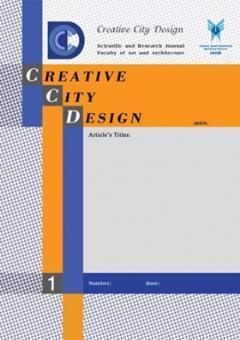Application Of the Physical Components of Educational Corridors in Promoting the Creativity of Architecture Expert Students with An Emphasis on Experimental Designs
محورهای موضوعی : Creative City Designshabnam asgaripur 1 , Reza Farmahini 2 , Mahmoud Nikkhah Shahmirzadi 3
1 - PhD student. Department of Architecture, Semnan Branch, Islamic Azad University, Semnan, Iran
2 - Assistant Professor, Department of Architecture, Faculty of Arts and Architecture,Yadegare-e-Imam Khomeini(RAH) Shahre Rey Branch, Islamic Azad University, Tehran ,Iran
3 - Assistant Professor, Department of Civil Engineering, Semnan Branch, Islamic Azad University, Semnan, Iran
کلید واژه: physical components, educational corridors, creativity, architectural expertise ,
چکیده مقاله :
Learning always occurs in the environment and environmental factors and conditions are unconsciously involved in the quality of education, so the environment as an educational place is important in terms of quality. The elements of the environment as non-formal education form an important part of the trainings outside the workshop locations. As a behavioral setting, environments are made up of elements that have meaning together. The characteristics and quality of each of these elements are effective in the formation of the type of learning. The purpose of this research is to change the environmental conditions in order to increase creativity by using experimental designs. This research is using causal-comparative method in A-B-A experimental designs. Targeted-cluster sampling of first-year and final-year students is used, and the sample size of students is determined by the available method with sufficient quantity. For both groups, control and test groups are considered. The results show that Torrance's creativity variables have grown in the group of first-year students, and the highest growth is related to the flexibility variable with a value of (1.000) and the lowest related to the variable Fluency is (0.589) in the fourth year group, the difference between the average coefficients between the post-test and the pre-test is much higher, and the highest level of improvement in flexibility and fluency variable is (1.000) and the lowest is related to expansion with the value is (0.851).
Learning always occurs in the environment and environmental factors and conditions are unconsciously involved in the quality of education, so the environment as an educational place is important in terms of quality. The elements of the environment as non-formal education form an important part of the trainings outside the workshop locations. As a behavioral setting, environments are made up of elements that have meaning together. The characteristics and quality of each of these elements are effective in the formation of the type of learning. The purpose of this research is to change the environmental conditions in order to increase creativity by using experimental designs. This research is using causal-comparative method in A-B-A experimental designs. Targeted-cluster sampling of first-year and final-year students is used, and the sample size of students is determined by the available method with sufficient quantity. For both groups, control and test groups are considered. The results show that Torrance's creativity variables have grown in the group of first-year students, and the highest growth is related to the flexibility variable with a value of (1.000) and the lowest related to the variable Fluency is (0.589) in the fourth year group, the difference between the average coefficients between the post-test and the pre-test is much higher, and the highest level of improvement in flexibility and fluency variable is (1.000) and the lowest is related to expansion with the value is (0.851).


